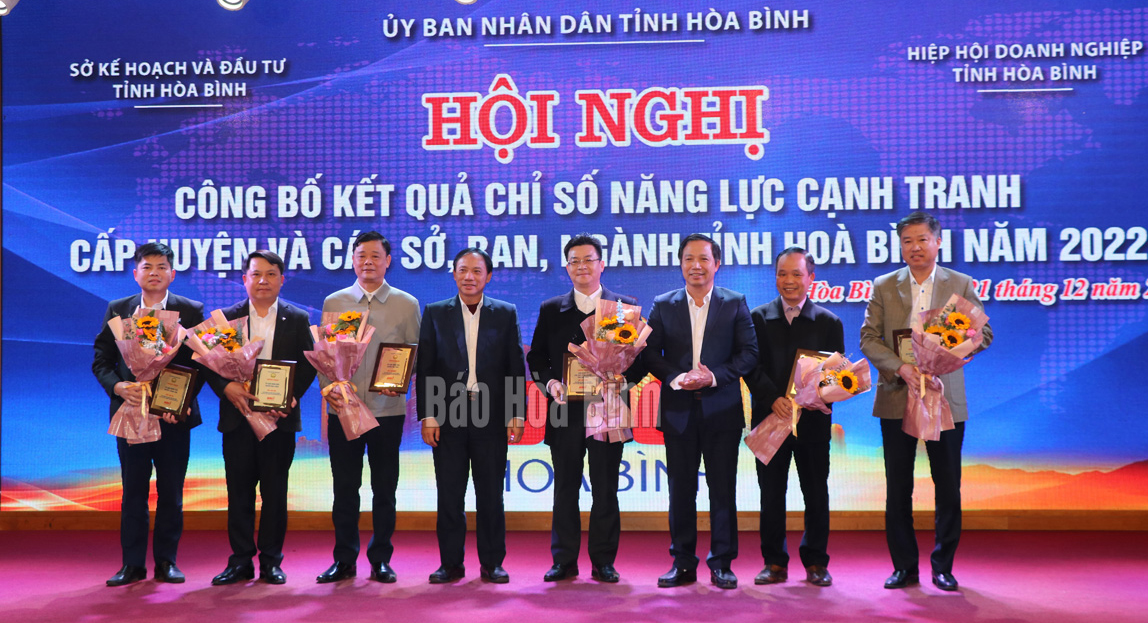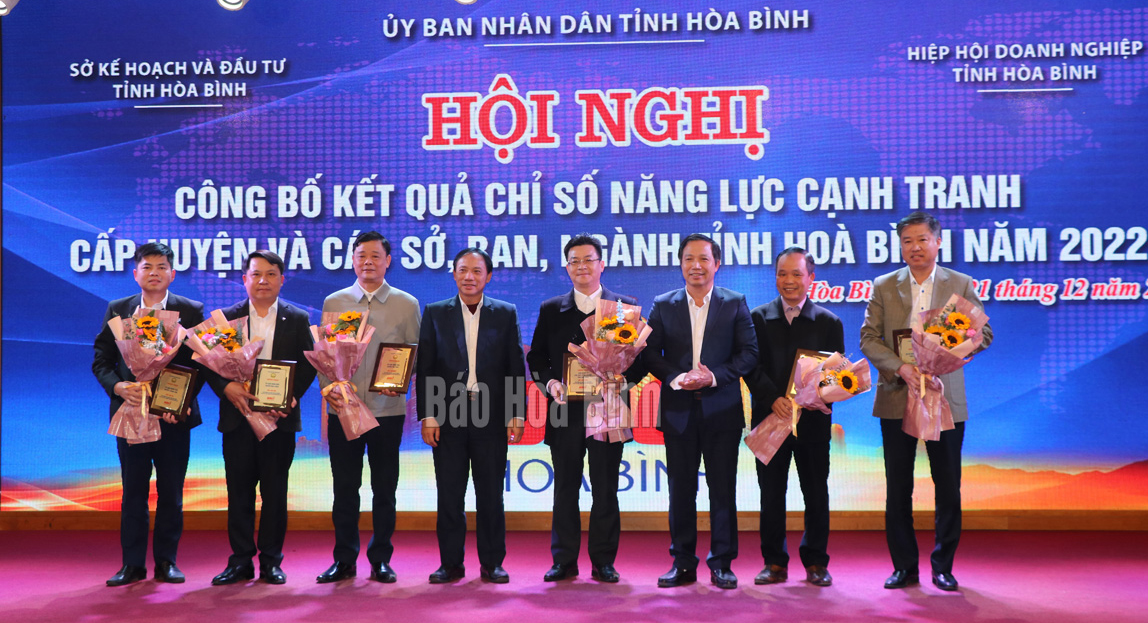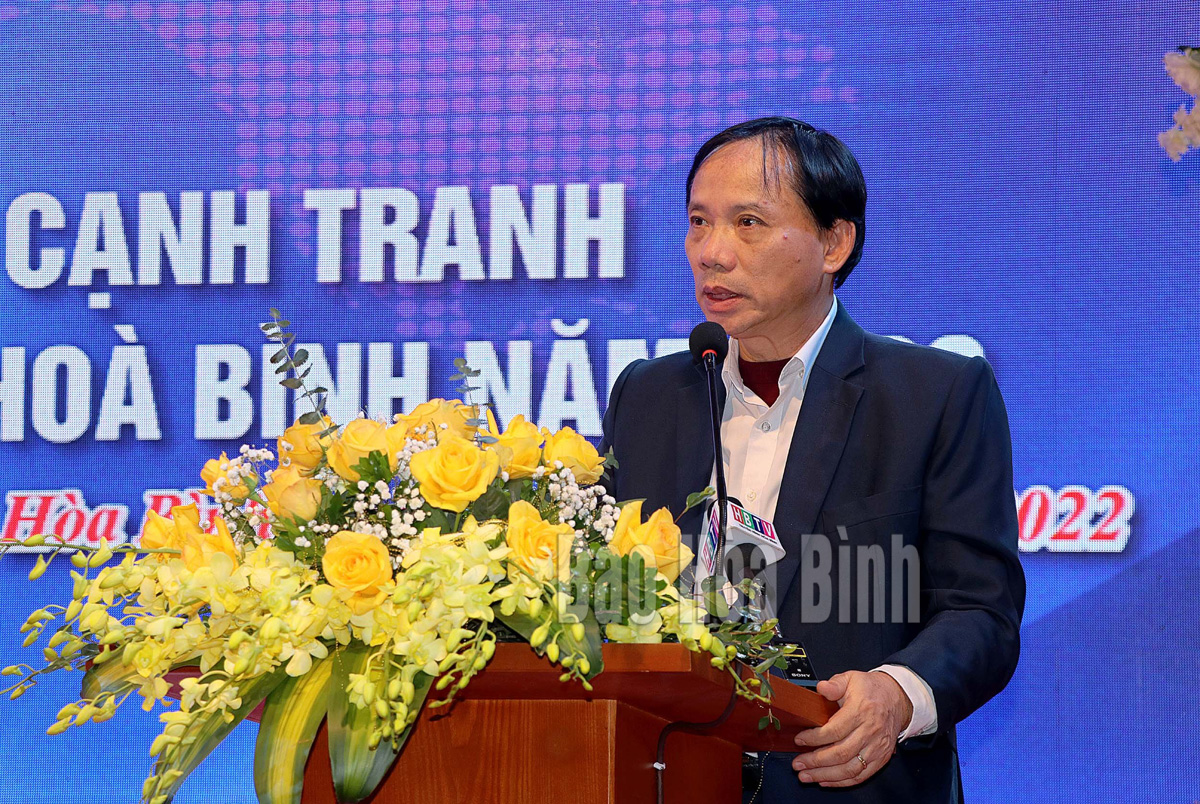
(HBO) – The Hoa Binh provincial People’s Committee has held a conference to announce results of the District and Department Competitiveness Index (DDCI) 2022.
Bui Van Khanh, Vice Secretary of the provincial Party
Committee and Chairman of the provincial People’s Committee; and Nguyen Van
Toan, Standing Vice Chairman of the provincial People’s Committee, present
certificates to the outstanding districts and departments in 2022.
In the 2022 DDCI survey, Economica Vietnam and
the Hoa Binh Business Association collected opinions on the performance of
district-level localities from 893 production and business establishments
(mainly business households and some enterprises and cooperatives), and on the
performance of departments from 641 enterprises, cooperatives, and some
business households.
Among the 26 departments and sectors that cover
28 management areas, the provincial Management Board of Industrial Parks ranked
first with 80.04 out of the 100 points, followed by the Hoa Binh branch of the
Vietnam Social Security with 78.58 points and the provincial Department of
Planning and Investment with 77.94 points.
Compared to 2021, the average score of
departments and sectors increased by 2.26 points to 77.8. However, such
improvement was not enough to give a strong impetus to reforms. The score
difference between the best and worst performers is 10.04 points while it was
7.64 last year.
Of the 10 district-level localities, Yen Thuy
district with 85.54 points topped the list. Eight others recorded scores of
between 70 and under 80, namely Hoa Binh city and the districts of Mai Chau,
Luong Son, Kim Boi, Lac Thuy, Tan Lac, Lac Son, and Da Bac. The last is Cao
Phong district with 69.19 points.
Across Hoa Binh province, the sub-index on
informal charges posted the highest score – 8.1 points, up from 7.94 points in
2021. The worst-performing one is market entry, 6.99 points.
Bui Van Khanh, Vice Secretary of the provincial Party Committee and Chairman of
the provincial People’s Committee, speaks at the conference.
Addressing the event, Bui Van Khanh, Vice
Secretary of the provincial Party Committee and Chairman of the provincial
People’s Committee, asked the localities and departments to analyse the
sub-indexes and improve the low ones so as to better the investment and
business climate and the local competitiveness.
He expressed his hope that enterprises and
investors will coordinate with departments, sectors, and localities to tackle
difficulties and obstacles to contribute to common development of the
province./.
According to data from the Hoa Binh Provincial Party Committee, the industrial production index for the first six months of 2025 is estimated to have increased by 20% compared to the same period last year. This marks the highest year-on-year growth rate for this period since 2020.
In the first six months of 2025, Hoa Binh province’s export turnover was estimated at 1.145 billion USD, marking an 18.11% increase compared to the same period in 2024. Import turnover was estimated at $ 804 million, a 17.15% increase, which helped the province maintain a positive trade balance.
The lives of the ethnic minority farmers in Tan Lac district have gradually improved thanks to the new directions in agricultural production. This is a testament to the collective strength fostered through the professional associations and groups implemented by various levels of the district’s Farmers’ Union.
With the motto the "product quality comes first,” after nearly one year of establishment and operation, Muong village’s Clean Food Agricultural and Commercial Cooperative, located in Cau Hamlet, Hung Son Commune (Kim Boi district), has launched reputable, high-quality agricultural products to the market that are well-received by consumers. The products such as Muong village’s pork sausage, salt-cured chicken, and salt-cured pork hocks have gradually carved out a place in the market and they are on the path to obtaining the OCOP certification.
In the past, the phrase "bumper harvest, rock-bottom prices" was a familiar refrain for Vietnamese farmers engaged in fragmented, small-scale agriculture. But today, a new spirit is emerging across rural areas of Hoa Binh province - one of collaboration, organisation, and collective economic models that provide a stable foundation for production.
Maintaining growing area codes and packing facility codes in accordance with regulations is a mandatory requirement for agricultural products to be eligible for export. Recently, the Department of Agriculture and Environment of Hoa Binh province has intensified technical supervision of designated farming areas and packing facilities to safeguard the "green passport" that enables its products to access international markets.




